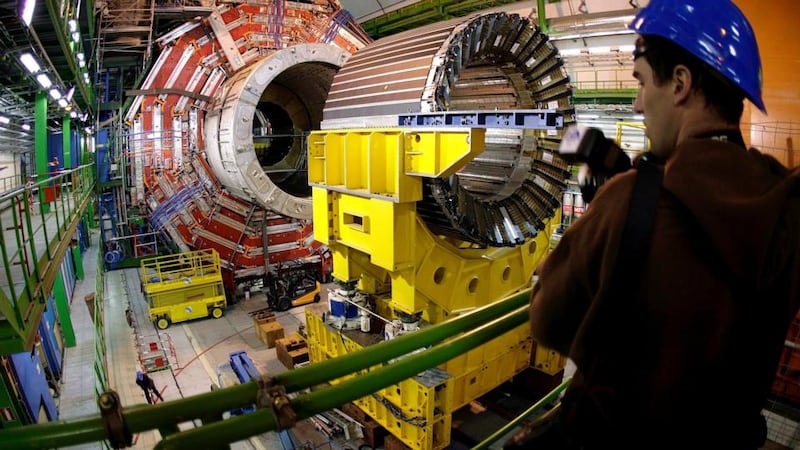The State is on course to become a member of Cern – the European Organisation for Nuclear Research, one of the world’s largest centres for scientific research – early next year.
Minister for Science James Lawless made an official visit to Cern’s headquarters in Geneva on Wednesday with a delegation of representatives from more than 20 Irish organisations.
“Associate membership of Cern has long been a national goal and it is a pleasure to work on bringing Ireland into this world-leading centre for scientific research,” he said.
“I am delighted to say that Ireland’s application is at an advanced stage and we are hoping to join in early 2026.”
RM Block
What does Cern do, exactly?
Cern is the premier particle physics lab in the world and is concerned with questions of mind-blowing significance such as “what is our universe made up of?” and “what happened after the Big Bang?”
The main focus of activity at Cern is the Large Hadron Collider, a huge underground ring in which protons – one of the constituent particles of an atom – are accelerated close to the speed of light and collided into one another. It was used to discover the Higgs boson, the so-called “god particle” which gives matter mass and holds the physical fabric of the universe together.
Many technologies developed at Cern have gone on to have applications in other spheres such as medicine, space, energy and ICT, such as the world wide web and the touch-sensitive technology in your smartphone.

Who are the existing members of Cern?
An intergovernmental organisation, Cern was established in 1954 by 12 founding members and straddles the Franco-Swiss border.
It now has 24 member states (including most of the EU) and 10 associate members, as well as co-operation agreements with over 40 other states including Ireland.
What would membership mean for Ireland?
Members of the scientific community say associate membership for Ireland would bring benefits to research, industry, skills, science outreach and international relations.
It would also open doors for Irish researchers to participate in Cern’s scientific programmes, while Irish citizens will be eligible for staff positions and fellowships. These include masters and PhD programmes, apprenticeships, training schemes and internships.
Membership would also allow Ireland’s enterprises to compete in Cern procurement programmes.
Why has it taken so long for Ireland to join?
It has not been a political priority until recently when Ireland applied in 2023.
The delay may have had much to do with Cern’s involvement in nuclear research. (When membership came up for debate in 1999, for example, Ireland passed a law prohibiting the production of electricity for the national grid by nuclear means.)
When it came up again as recently as 2016, the response from the government at the time was that it did not have the money to join.
However, the Government is now fully behind joining. Minister James Lawless and Tánaiste Simon Harris, in particular, are strong supporters.
The irony is that Ireland has a long history in particle physics. Waterford native and Trinity graduate Ernest Walton built a particle accelerator in the 1930s and became the first person to split the atom.
How much will membership cost?
The expected financial commitment is €1.9 million annually, for an initial period of five years. After this period, Ireland and Cern will work together to consider “the best membership options for Ireland”.
Cern estimates that for every euro invested the State will get three back in the form of high-tech equipment purchased from Ireland in industrial contracts and other benefits.
Are Irish universities involved in Cern?
Yes – University College Dublin has worked with Cern on collaborations since the early 2000s, while Trinity College Dublin and Munster Technological University have done so more recently.


















